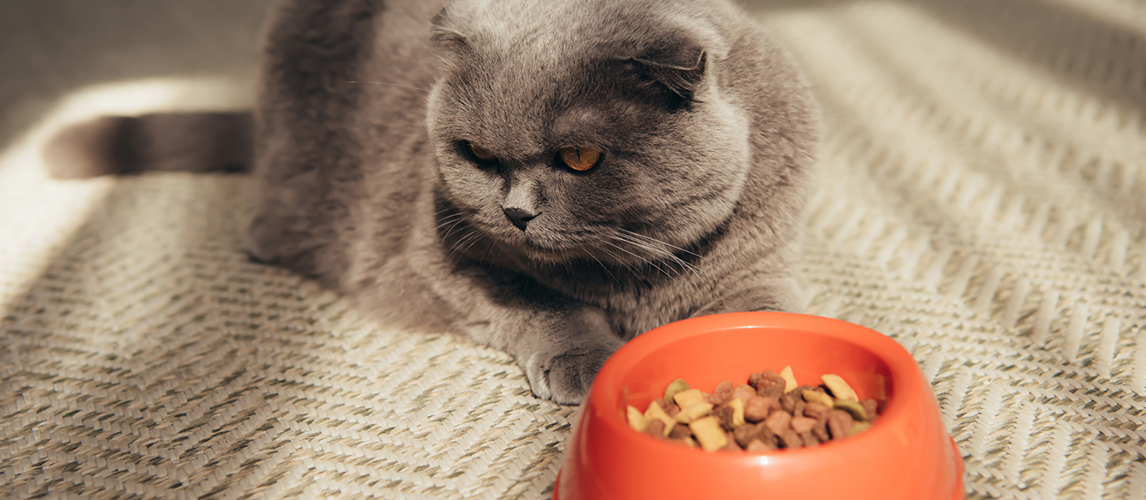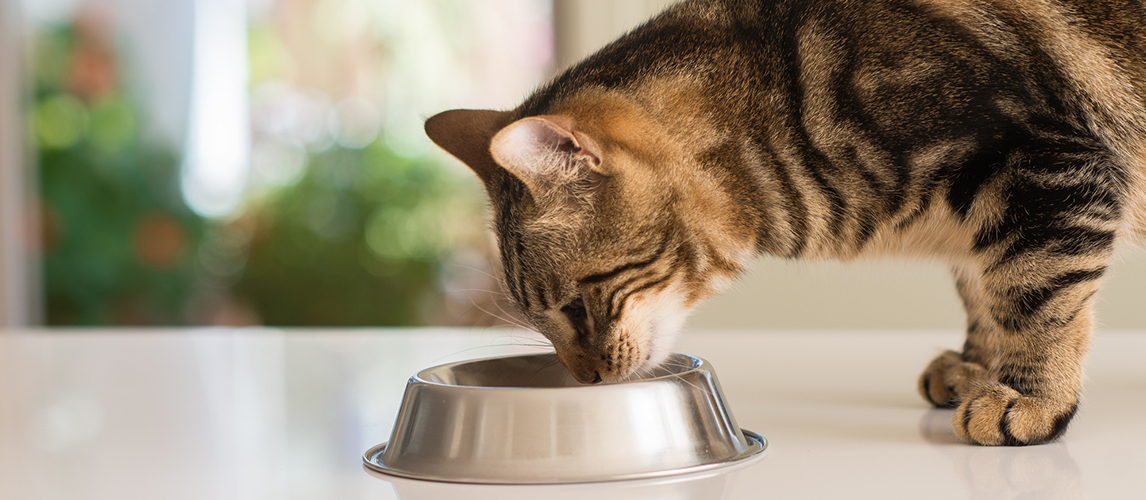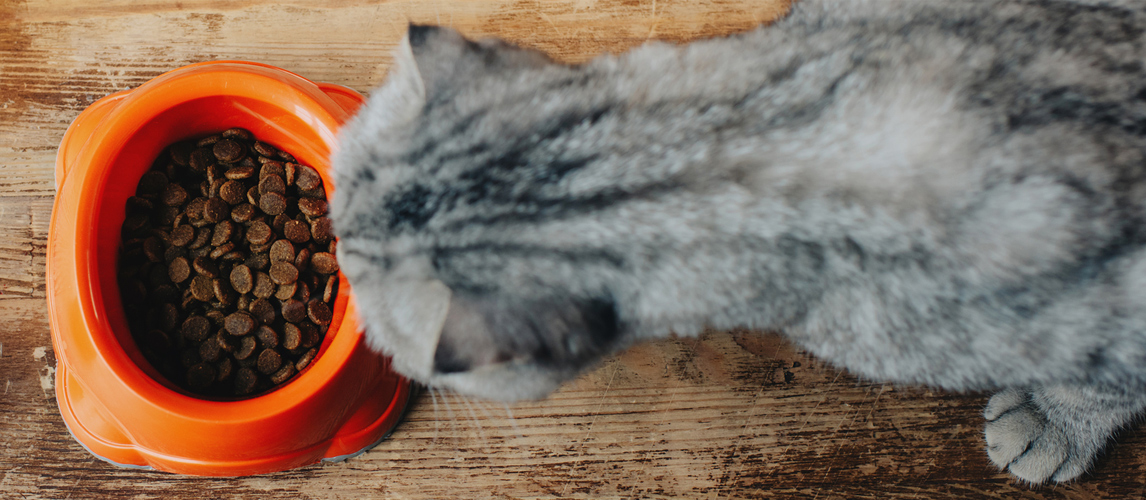Feline nutrition provides the framework for optimum growth and development. Unfortunately, some pet parents make the mistake of not carefully choosing the food that they give to their respective cats. Picking the right cat diet starts with an understanding of their unique nutrient requirements, the different types of feline food in the market, and the different things to look for in the best feline diet.
Dissecting the Feline Nutritional Needs
Choosing the best food for our feline friends requires a basic understanding of their unique nutritional requirements. And while it is safe to assume that the nutritional needs of cats are almost similar to the needs of small breeds of dogs, this line of thinking is not only erroneous, but it also underestimates the unique characteristics of cats. Here is a rundown of the nutrient requirements of cats.
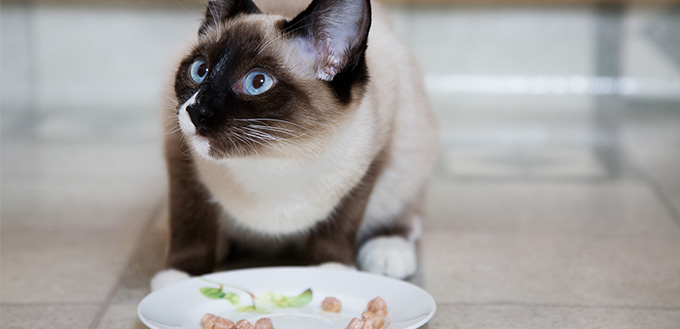
Protein
According to the Association of American Feed Control Officials, cats require a minimum of 30% protein per kilogram of a cat’s diet for growth and reproduction needs and at least 26% for adult maintenance. When it comes to the specifications of the National Research Council, however, the amount of protein required by adult cats for maintenance is at least 40 grams for every 1000 kcal of metabolizable energy (ME) with the recommended amount at 50 grams.
Regardless of which standard you want to adhere to, one thing is certain: cats need protein as the single most important nutrient that they need to build muscles, develop organs, synthesize hormones and immune system cells, and a whole lot more.
The reason for this is quite simple. Cats, regardless of how they have evolved through the millennia, are still believed to be strongly carnivorous animals. They are predators by nature. From their innate behaviors to feeding patterns, there is always a hint of being a natural predator. And since cats are natural predators, one cannot expect them to be munching on grass, leaves, fruits, tubers, and other plant ingredients for food. We had to emphasize this because there are also plants that are good sources of proteins.
Science has proven that animal-based proteins not only provide easily-digestible food molecules designed for the strictly-carnivorous gut, but they also provide a complete array of essential amino acids.
One of the classic examples of amino acids that is present in animal proteins, but not in plant sources, is taurine. This amino acid is responsible for optimum functioning of both the skeletal muscles and the cardiovascular system. Cat food manufacturers overlooked the importance of this amino acid. Only when cats started dying because of problems in their cardiovascular systems did the cat food industry realized that taurine is important. Today, taurine is often included as an ‘additional’ ingredient to cat food. Taurine is just one of several amino acids that is not found in plant-based proteins.
Both the AAFCO and the NRC recommends that cats receive the following amino acids: arginine, histidine, lysine, phenylalanine, isoleucine, leucine, threonine, cysteine, methionine, tyrosine, taurine, valine, and tryptophan.
Fats
Cats need fats, too. In the wild when cats devour their prey, they technically eat everything until only some of the bones are left. Meat is actually composed of proteins and fats so it is natural to expect that even domesticated felines will also require fat in their diet.
The AAFCO recommends at least 9% of fat for every kilogram of cat food while the NRC recommendation is at 22.5 grams per 1,000 kcal ME, but not to exceed 82.5 grams. Perhaps what is more important is the fact that cats, especially kittens, need both EPA and DHA in their diets. This is in addition to linoleic acid, arachidonic acid, and gamma-linolenic acid, all of which are omega-6 fatty acids. Docosahexaenoic acid and eicosapentaenoic acid are both omega-3 fatty acids. There is another omega-3 fatty acid, alpha-linolenic acid, but this does not really produce any clinically significant effects since it has to be converted into EPA or DHA in the cat’s body for it to be utilized.
Unlike certain animals, cats cannot convert linoleic acid to gamma-linolenic acid which is highly beneficial for their coat and skin health. They also cannot get arachidonic acid from plant sources; hence, they have to obtain it from meat ingredients. It is for this reason that meat-based cat food still provides the best possible nutrition for felines.
Minerals and Vitamins
Calcium and phosphorus are two of the most important minerals that cats need to develop and strengthen their bones and provide a framework for their joints. Potassium, sodium, and chloride are also important in a variety of metabolic processes, but more so in keeping the integrity of the cells. Other minerals that cats need include magnesium, copper, manganese, iron, zinc, selenium, and iodine in appropriate amounts. Minerals play a role in the production of enzymes, the maintenance of normal body and fluid pH, the efficient transport of oxygen and nutrients, and the enhanced utilization of nutrients.
Vitamins, on the other hand, are important in the cat’s regulation of metabolism while enhancing the various processes associated with growth and development. There are a few things one need to understand about the vitamin consumption of cats. In general, cats cannot convert beta-carotene found mostly in plants into vitamin A. As such, they require preformed vitamin A present in animal sources such as meat, poultry, fish, and dairy products.
You May Also Like: Vitamins For Cats
Water
While water is hardly considered a nutrient, it is one of the most important elements among living things. Water provides a safe environment upon which chemical reactions take place. Without water, various chemical and metabolic processes simply will not proceed as efficiently.
When cats eat their prey in the wild, they are essentially taking in about 70 to 80 percent moisture. This is already sufficient to meet their requirements for water. That is why you also seldom see them actively searching for water. Additionally, their thirst drive is not really that highly-developed so even if there is water in front of them, they will not be drinking at all; unless, of course, you do something to their water like adding catnip, ice cubes, or a few drops of tuna or chicken broth.
Read here our guide on Cat Water Fountains.
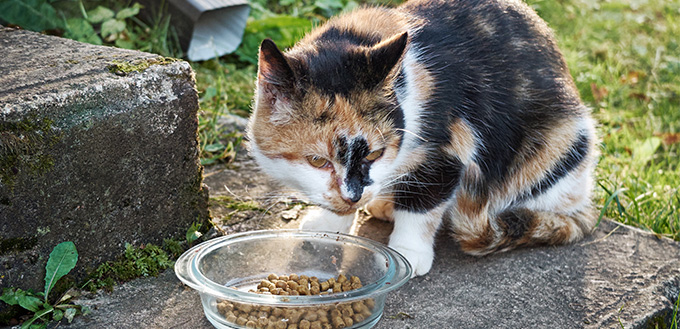
Different Types of Cat Food
Knowing the nutrient requirements of your cat is just one aspect of choosing the right food for your pet. The second most important consideration is the type of food that is available for your kitty. We’ll be relying mostly on what we have discussed so far in the preceding section.
Dry Cat Food
If you love your kitty, this is the last diet you should give; unless you can guarantee that your cat will be drinking plenty of water from other sources and that the cat food formulation itself is nutritionally-balanced. This is because dry cat food only contains about 10 to 12 percent moisture with the remainder as the dry matter ingredient. It should be good news, right? Since you’re actually talking about 88 to 90 percent dry matter, then it should be safe to assume that it has more proteins and fats.
Sadly, this is not always the case. Typical dry cat food will have 10% moisture, 25% proteins, and 12% fats. This means that of the 90% dry matter ingredients, only about 37 to 50 percent are proteins and fats. What about the remaining 40% you may ask? Well, this is where fillers come in. Pet food manufacturers don’t want to call it fillers; they want to call it healthy carbs and wholesome grains. But if you noticed from both AAFCO and NRC recommendations, they did not actually mention anything about carbohydrates.
Of course, vegetables and fruits are also important since they provide most of the vitamins, minerals, and antioxidants that cats also need. Unfortunately, you have to be very careful in choosing the kind of dry cat food to give to your cat.
Nevertheless, dry cat food is perfect on an economic standpoint. It doesn’t spoil easily and is very easy to serve.
Semi-Moist Cat Food
To address the insufficient amount of moisture in dry cat food, some pet food manufacturers came up with a semi-moist cat food formulation. As the name suggests, these provide about 25 to 45 percent moisture with the remaining as dry matter ingredient. The moisture content is nowhere near the ideal, but it’s a good compromise especially if your cat is not really drinking that much. It’s also very palatable, too. The downside is that it has a very short shelf life and comes off as quite expensive.
Check out our review of the Best Moist & Semi-Moist Cat Food.
Wet Cat Food
Most folks believe that wet cat food contains the lowest amounts of protein, owing to the fact that it contains between 78 to 80 percent moisture. This means that the dry ingredient matter only comprises 20 to 22 percent. But the actual composition of both proteins and fats as listed in the label pertains to the dry matter component.
For instance, a 13-ounce can of cat food will have 78% moisture and only 12% protein. To compute for the actual percentage of protein, you have to divide the 12% by the dry matter weight (22%) to give you 54%. So, you are actually giving your pet cat 54% proteins, not 12%.
The downside of wet cat food formulations, of course, is that they can really be expensive and have even shorter shelf-life than semi-moist cat food. When it comes to your cat’s hydration and protein needs as well as improved palatability, very few cat foods can compare to wet cat food.
Home-Cooked Cat Food
This is something that you won’t see in pet store shelves as you’ll be the one to prepare the dish for your cat. Knowing that cats thrive on meats because of their predatory nature, most pet parents who prefer to cook cat food for their kitties choose chicken, fish, or turkey as their principal ingredients. These are usually partially boiled; otherwise they tend to be dry. The problem with cooking cat food is that you’ll never have a clear idea of just how much proteins, fats, minerals, and vitamins you’re actually giving to your pet.
Raw Cat Food
Giving raw meats to cats is like allowing them to relive their predatory nature. Most pet parents who adhere to this practice tend to give whole rabbits or even whole fish so cats can eat everything – meat, bones, organs, and all. This provides them with the best possible nutrient profile as if they were in the wild. There is a catch, though. Unless you are confident about the source of your raw ingredients, these can actually contain parasites and other microorganisms that can harm your pet.
Kitten Food
It is important to realize that kittens require substantially different amounts of nutrients than their adult counterparts. The NRC recommends giving 56.3 grams of protein per 1,000 kcal ME. Adult cats require 50 grams. This is because kittens experience rapid growth spurt. Compared to puppies, kittens can reach full maturity within 200 to 220 days. As such, they need substantially higher proteins in their diets than adult cats. They also need more DHA for brain and eye development as well as calcium and phosphorus. That being said, these should be factored-in in your decision to buy the best cat food.
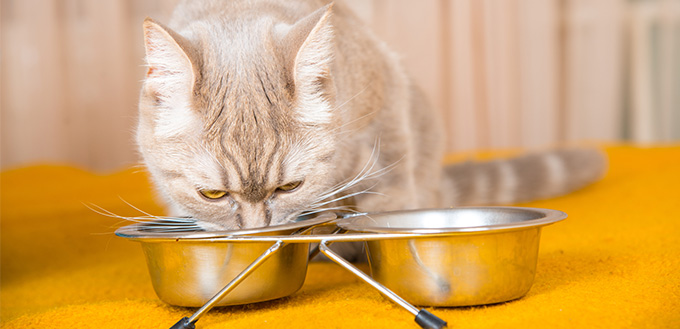
Things to Look for in the Best Cat Food
Understanding the unique nutritional requirements of cats should already be enough to help you zero-in on the best possible cat food for your pet. When this is coupled with your knowledge of the different types of cat food, you’re definitely in a much better position to choose the best feline diet. Here are some things you have to look for.
- High quality, named animal protein as first ingredient
We discussed above how cats thrive on proteins especially those that are animal-sourced. Aside from the proteins and fats that meats contain, they are also rich with DHA, EPA, and pre-formed vitamins that can be readily used by cats, especially kittens. As such, the very first thing that you have to look for is high-quality, named animal protein as the cat food’s first ingredient.
When we say ‘named’, the animal protein should be readily identifiable. For instance, if you see ‘poultry’ as the first ingredient you’ll have to be curious as to what kind of poultry is included in the formulation. Is it chicken, turkey, duck, or something else? As such the animal protein must be readily identifiable.
This is especially true for cat foods that utilize ‘meals’ as their primary ingredient. Chicken meal is a lot easier to understand than ‘poultry meal’ since you’re not sure just what kind of poultry there is. The same is true with other so-called meals such as ‘fish meal”. You’ll have a much clearer understanding of you’re giving to your pet if you have, say ‘tuna meal’ or ‘salmon meal’.
- AAFCO compliance
The AAFCO requires pet food manufacturers to put the nutrient indication of the formulation on the label. If it is for “All Stages”, then this should be appropriately indicated in the label. An ‘all-stages’ cat food is designed to cater to the maintenance needs of cats across different life stages like kittenhood, adulthood, and seniorhood. It is also important that the label reads “complete and balanced” to make sure that you have the best possible blend of nutrients for your cat. If the cat food happens to be a specialty diet like a kitten food or food for obese cats, these should also be appropriately placed on the label.
You may also like our guide on the Best Senior Cat Food.
- Named fat source
Just as a named protein source is important, the fat source should also be named. For instance, you may see “chicken fat” or even sunflower oil in the list of ingredients. The important thing here is that you have a very clear idea of what you are actually giving your pet.
- Taurine
Technically, if the cat food already contains turkey or chicken, there really is no need to look for additional taurine in the cat food. If the ingredient list includes chicken or turkey as the main protein, yet the cat food also includes taurine as an additional ingredient you’d have to wonder why the pet food manufacturer still decided to add taurine in their formulation. However, if the brand specifically identified chicken or turkey as the source of taurine, then it is perfectly okay. If there are no indications of such nature, then your guess is as good as anybody else’s.
- Moisture
Water is very important for all living organisms, cats, dogs, and humans included. If you are not sure that your cat is getting enough water, then you really need to pick cat food that has plenty of moisture. You can also go for dry cat food except that you have to moisten this to meet your cat’s hydration requirements.
- Vitamins and minerals
Your cat also needs vitamins and minerals so it is also best to look for these. Both the AAFCO and the NRC have recommendations on just how much minerals and vitamins cats need. It would be wise to check these out, too, and compare them with what you see on the label of cat foods.
Optimum feline nutrition is predicated on the abundance of high-quality animal-based proteins. Regardless of whether it is home-made or commercial pet food, this should be your main focus in your search for the best.
Check out our ultimate guide on the Best Cat Food for Kidney Disease.
Sources:
- Choosing The Right Food For Your Dog Or Cat, Animal Humane Society
- Dr. H. Ellen Whiteley, How to Care for a Cat, HowStuffWorks
- Feline Nutrition 101 – The Basics of Feeding Your Cat, VetStreet
- Krista Williams, BSc, DVM, Dry, Canned, or Semi-Moist: Food Choices for Cats, VCA Hospitals



